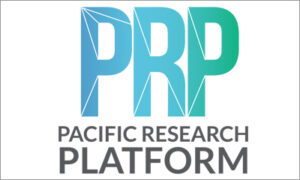- About
- Network
- Community
- Initiatives
- News
- Events
- Blog
- Publications

Pacific Research Platform: The Future of Big Data Collaboration
From biomedical sciences to particle physics, today nearly all scientific research and data analysis involves remote collaboration. To work effectively and efficiently on multi-institutional projects, researchers depend heavily on high-speed broadband connectivity to large datasets, large-scale scientific tools, and supercomputing resources. To meet the needs of researchers in California and beyond, the National Science Foundation (NSF) awarded a five-year, $5-million grant to fund the Pacific Research Platform (PRP).
“Research in data-intensive fields is increasingly multi-investigator and multi-institutional, depending on ever more rapid access to ultra-large heterogeneous and widely distributed datasets,” said UC San Diego Chancellor Pradeep K. Khosla. “The Pacific Research Platform will make it possible for researchers to transfer large datasets to where they work from their collaborators’ labs or from remote data centers.”
PRP extends to a regional scale the Science DMZ model developed by the US Department of Energy’s Energy Sciences Network (ESnet). A Science DMZ is implemented at the border of a campus or institution's computer network, and consists of equipment and security policies distinct from those supporting general purpose networking and specifically designed and configured to optimize data-intensive, high-performance research applications. PRP builds on the high-performance infrastructure of Pacific Wave, a joint project of CENIC and the Pacific Northwest Gigapop, to enable region-wide, virtual co-location of data with computing resources.
PRP is led by researchers at the California Institute for Telecommunications and Information Technology (Calit2) at UC San Diego, and at the Center for Information Technology Research in the Interest of Society (CITRIS) and the Banatao Institute at UC Berkeley. From Calit2, Tom DeFanti, co-principal investigator of PRP, leads the group of architects, engineers, and developers working on the technical design and implementation of PRP infrastructure and applications. And from CITRIS, Camille Crittenden, co-principal investigator of PRP, leads the group focused on faculty engagement in assessing science workflows, with the goals of improving outcomes and informing the technical development of PRP.
“PRP is an extraordinary collaboration among researchers, distributed computer architects, network engineers, measurement experts, and multi-institutional IT leaders, all of whom are working together to create a dedicated research cyber-infrastructure that will be a national — even global — model,” said Louis Fox, CENIC’s president and CEO. “The impact of PRP will create ripples across the diverse CENIC community, as innovations in the research community have done since CENIC’s inception.”
The Pacific Research Platform supports a broad range of data-intensive research projects that will impact science and technology worldwide, including projects on cancer genomics, human and microbiome integration, biomolecular structure modeling, galaxy formation and evolution, telescope surveys, particle physics data analysis, simulations for earthquakes and natural disasters, climate modeling, and virtual reality and ultra high-resolution video development. PRP creates a partnership of more than 20 institutions, including all 10 UC campuses, four national supercomputer centers, and the NSF Chameleon cloud testbed.
“To accelerate the rate of scientific discovery, researchers must get the data they need, where they need it, and when they need it,” said UC San Diego computer science and engineering professor Larry Smarr, principal investigator of PRP and director of Calit2. “This requires a high-performance data freeway system in which we use optical lightpaths to connect data generators and users of that data.” With such high-performance data transfer comes the potential for greater scientific discovery and innovation, fueling change that will help shape our world.
For more information, see the PRP fact sheet and website.
Related blog posts
CENIC and San Diego Supercomputer Center Create Sustainable Agriculture for California’s Future
CENIC’s networking and services, including CENIC AIR, can be a vital part of preparing new generations of farmers that will apply the latest technology to agriculture by turning the farm into an educational setting and improving the efficiency of farming as a career.
The Big Game Is Big Data: How CENIC and the California Research and Education Network Support Member Athletics
When Fresno State needed to connect to Pac-12 Enterprises to broadcast a live football game over CBS, the Chancellor's Office reached out to CENIC for what Pac-12 later called the smoothest turn-up they've ever experienced.


